The Poo Brigade
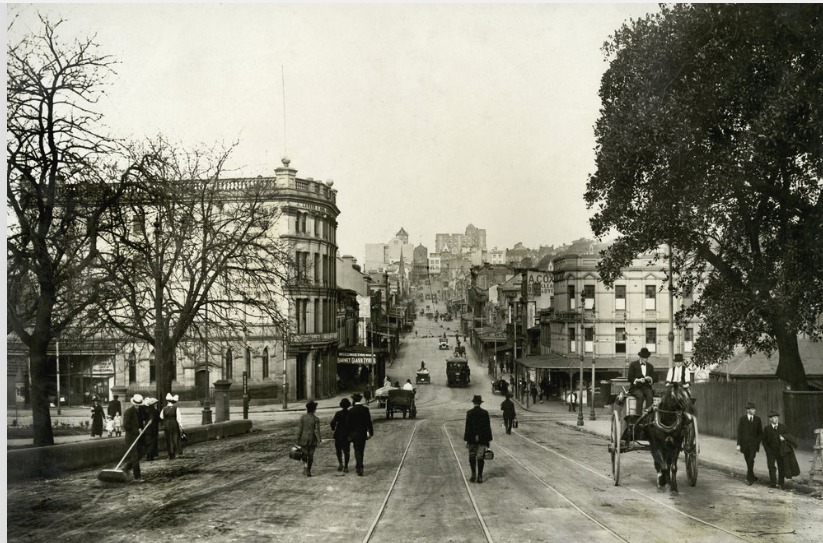
From Waler Data Base @ FaceBook. Image: Street sweeper near Cook Park opposite the Australian Museum, William Street Sydney, circa 1916. City of Sydney archives.
Poo brigade. Cleaning the streets in the horse days was arranged by the Health Department of councils.
It was rare to see a street sweeper during the day, visitors often remarked how clean our streets were, with never a sign of sweepers except the “crossing sweepers” in the busiest areas.
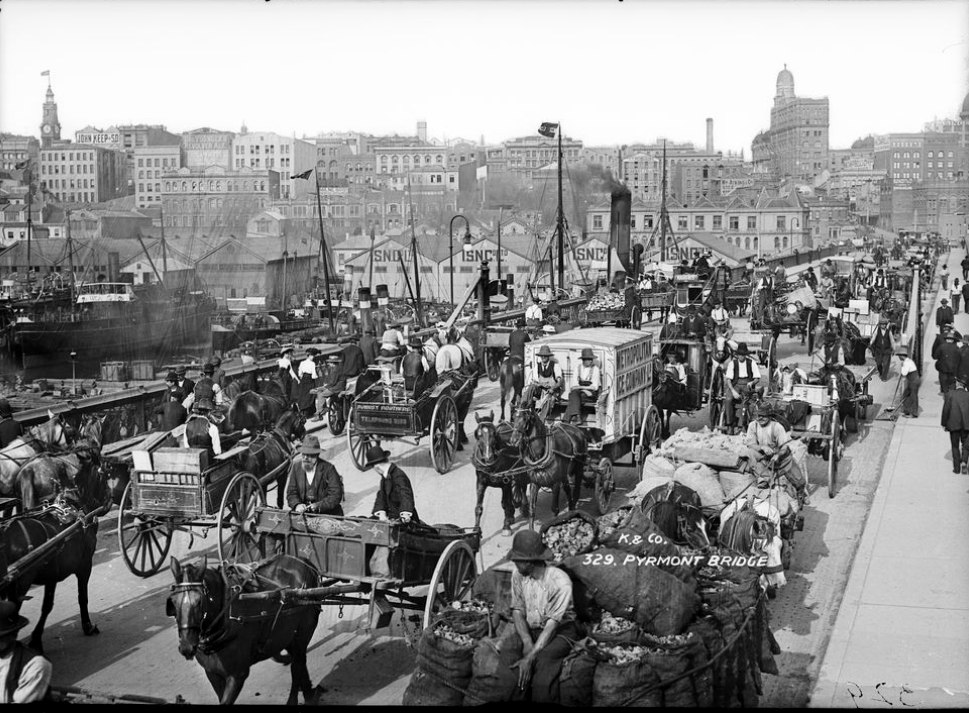
Image: ‘Pyrmont Bridge’, Powerhouse. Sweeper on the right – an unusual sight in daylight hours except when traffic was heavy…
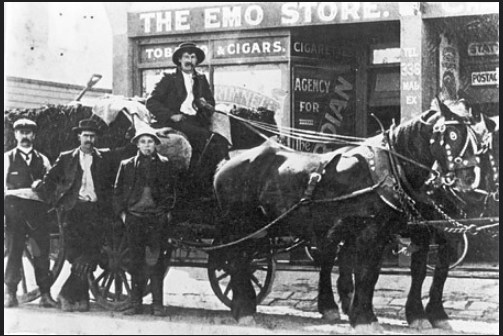
Street sweepers in cities here operated at night. Men with carts/drays got a bit over 12 shillings a week from council for taking the manure away. Drivers who didn’t own their horse and own cart got 9 shillings a week. Sweepers – boys and men – only got 2 to 4 shillings weekly (1911 Sydney wages).
Image: ‘George Closter returning from market with load of manure, outside Emo Store, Waverley Road, Mount Waverley, 1920s?,’ Monash Library Services
The week was 6 nights, Sundays always being a night off when streets weren’t cleaned. Over the years the wages crept up. Some of the block boys grew old in the job, doing it from 10 years old until they retired. By the 1950’s they were getting 11 pounds a week – more than the basic wage back then.
They worked from 11 pm right through to 5.30 am regardless of weather, clearing vast areas of streets. A water cart went through first., starting at 10 pm and also finishing at 5.30 a.m. A 40 hour working week.
The water cart was important as the packed blue metal of the time made a better road for horse feet and legs if watered regularly.
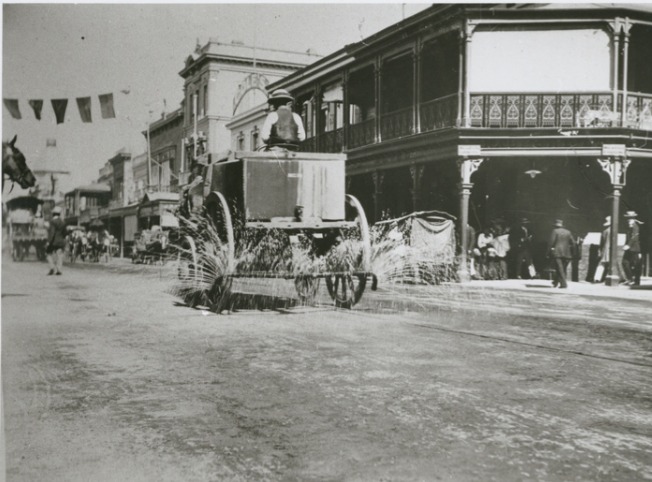
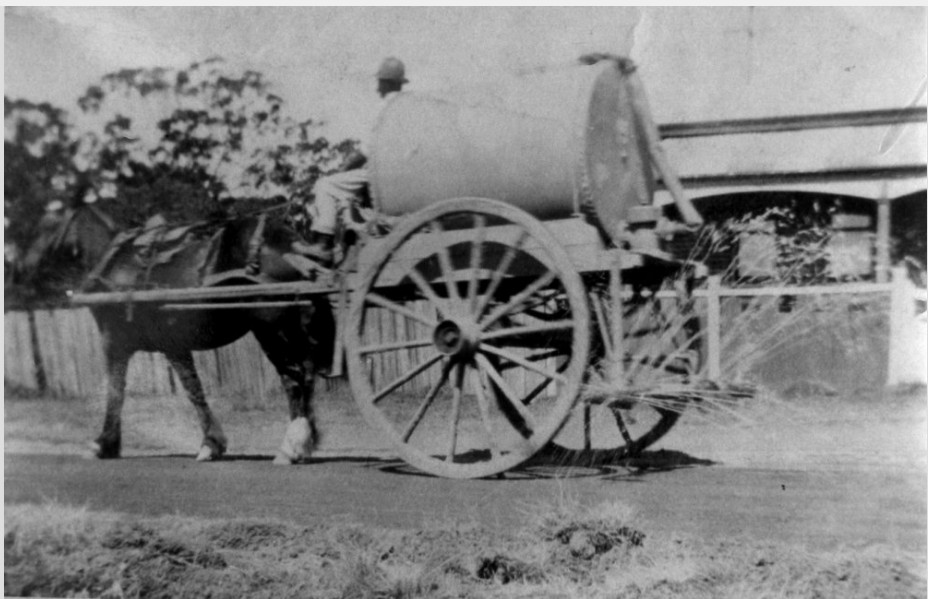
Images: Watering the street by horse and cart. c, 1900, State Library S.A,; Horse-drawn water tanker spraying the street to keep the dust down in front of residential properties… Blacktown City Libraries
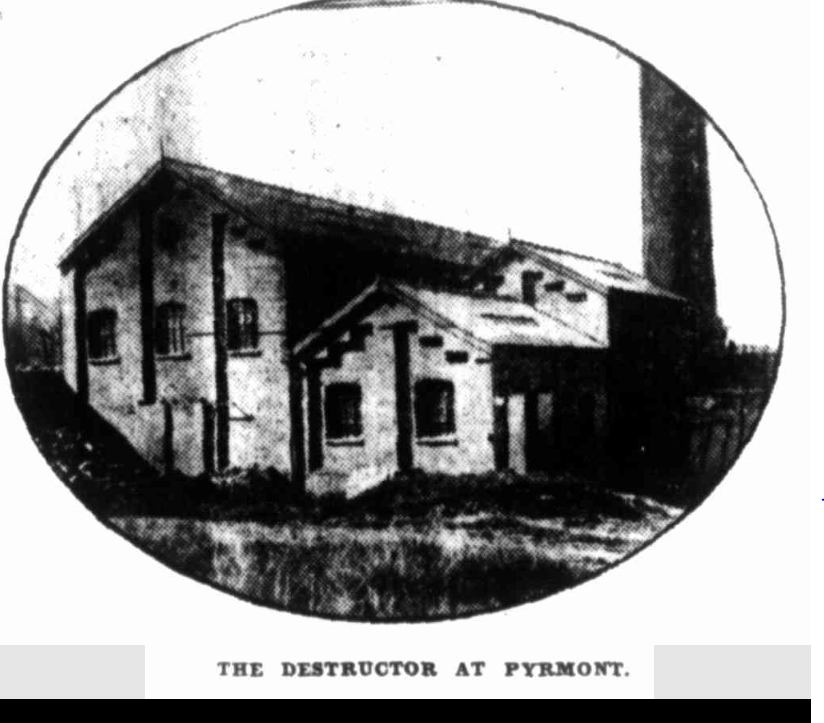
The manure was taken in covered carts to a central council area – invariably a city tip – often for burning in a large furnace called The Destructor – as it wasn’t just horse manure that was swept up, but any other rubbish, although littering was illegal and people were generally clean. Once a week the rubbish collection was also tipped into the manure carts – as this night varied from area to area, it meant every night some rubbish somewhere was always collected. There were big fines for uncovered manure carts/drays/wagons and for sweepers and carters loitering near their cart without working.
Image: Evening News, 15th August 1911
Some was taken to market gardens and orchards in or near the city, where it was piled to compost then spread. Newspapers often praised the size and quality of produce, and the plentiful garden flowers grown with liberal use of manure, to encourage people to use it, thus saving burning it or paying for it to go further out into the country.
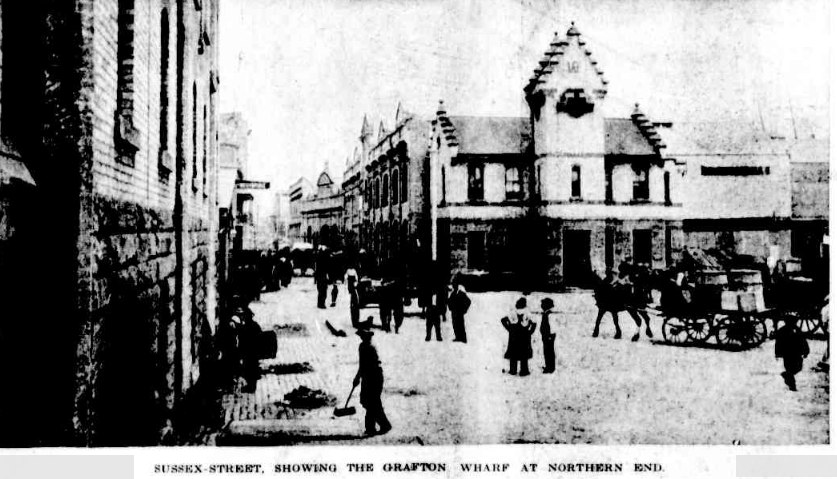
The water carts were followed by 7 feet wide rotating horse brooms. Then the “block boys” as they called the boys and men who swept, finished off with their 24 inch wide brooms. In early times they used a small hand shovel and hand broom – back breaklng work – then a trolley on wheels and long handled broom and scoop made life much easier.
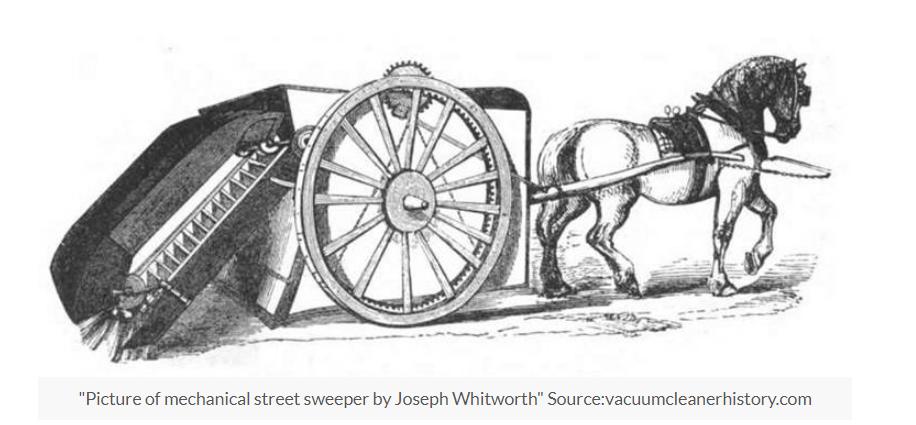
Some people with a horse and suitable vehicle (cart, dray, wagon etc) made a living independent from council, delivering manure to farmers within reach.. Some of these people collected it on market days where the horses that took produce to the market stood for a few hours, enjoying a nosebag. They kept the market clean and made a living. Businesses with big city stables for delivery horses and race stables were only too glad of a service that regularly took their manure away too. Some paid well for this service as sometimes the carters only option was not selling the stable sweepings, but taking it to the tip.
The block boys got used to the night life with all its interesting and at times scary people, and occasionally – not often – found a little bonus such as a lost coin. Every single thing found, even a farthing, was to be handed in to council, but coins rarely were of course. One block boy in Melbourne was famous for fixing a loud car tooter on his broom to startle late night revellers.
‘City Council block boy, York Street Sydney, 1928. This image was a publicity shot for the City Engineers 1928 annual report, showing the latest attempt to put the block sweepers into uniform.
By the 1890s boys were employed for removing horse dung from city streets. A ‘block boy’ was assigned a city block to keep clean. They were also referred to as the ‘horse dung brigade’ and the ‘sparrow starvers’. Block boys were equipped with uniforms, brooms and scoops to collect manure until it was removed to a council depot and sold to the public as fertiliser. At the end of World War 1, there were more than 200 block boys employed on the city streets.’
City of Sydney archives
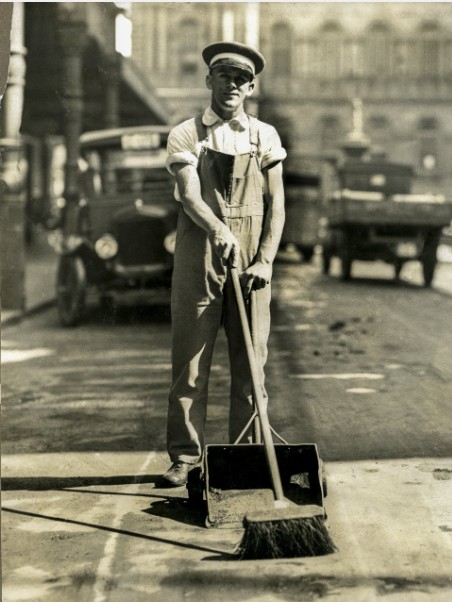
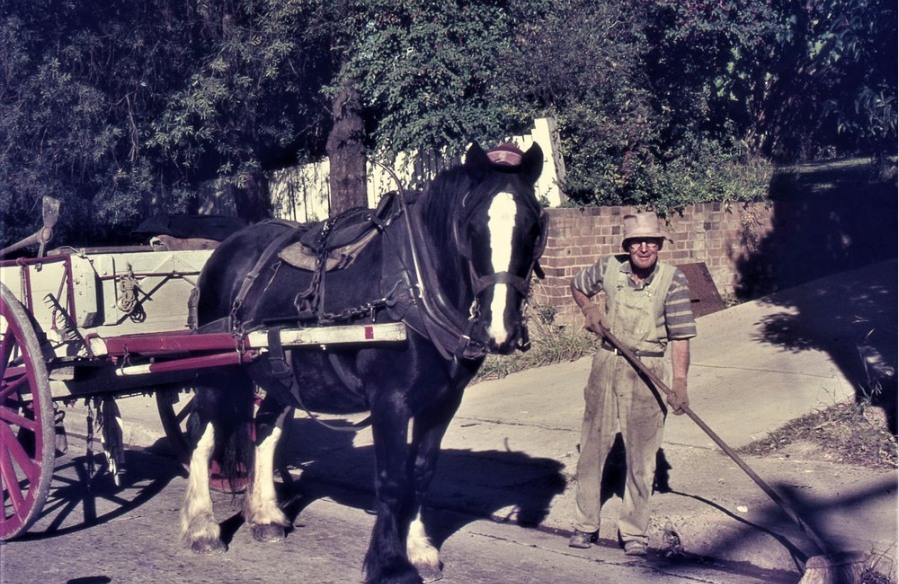
‘The workman is Bob Dunn and the horse is Peggy.
For many years Hornsby Shire Council owned three horses and carts for street cleaning purposes. The last horse affectionately named Peggy was a large black draught horse with a white blaze on her nose and three white feet. Peggy was a great favourite with the people of Beecroft and Cheltenham and especially the girls from Cheltenham Girls High School. The girls often placed a school hat on Peggy’s head and gave her delicacies to eat. Peggy’s trusted guardian was Mr. R. I Dunn of Pennant Hills who worked with Peggy and cared for her for 14 years. Peggy died in 1971 two weeks after she was retired at the great age of 20 years.’
Hornsby Shire Recollects
These days machines sweep our streets and trucks collect our garbage.